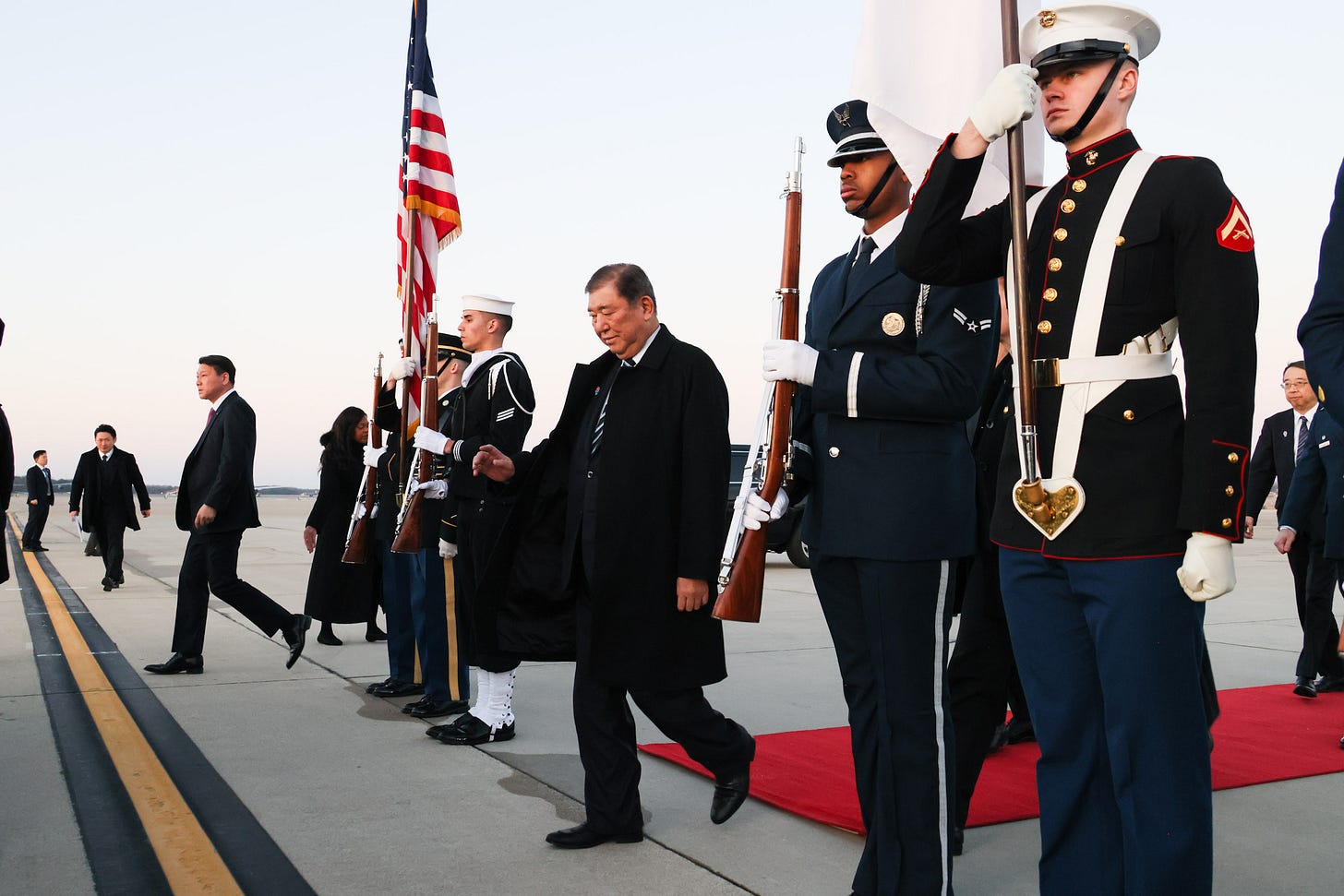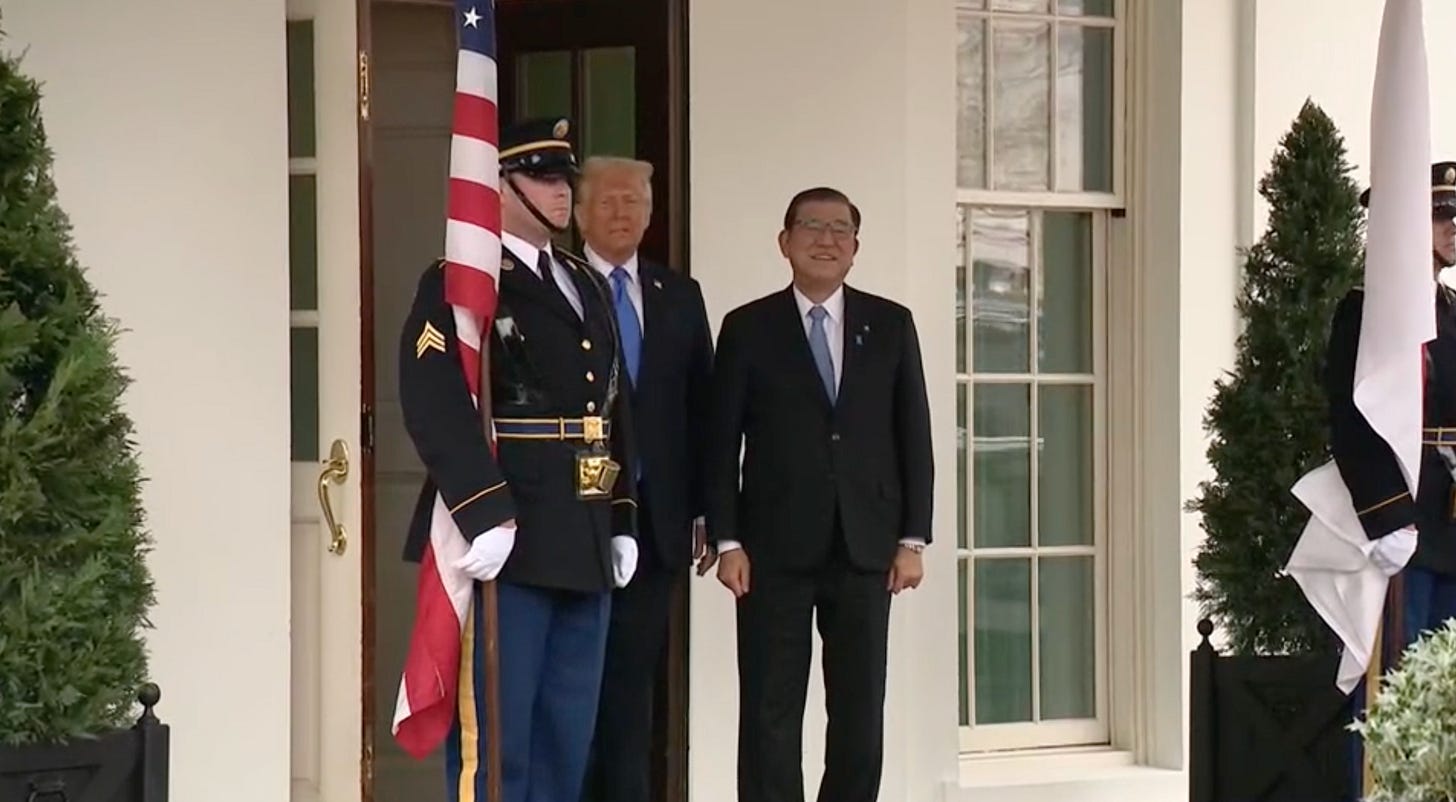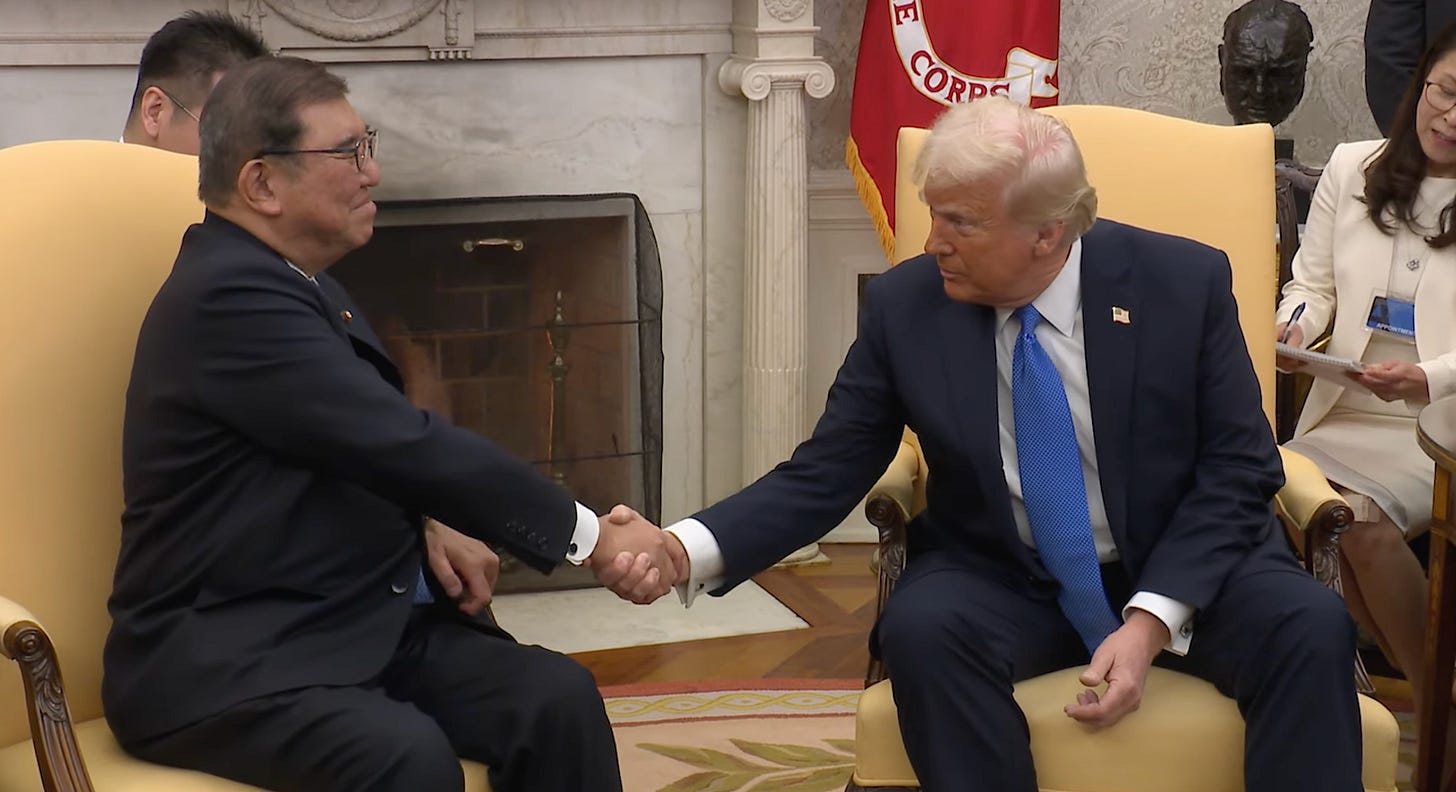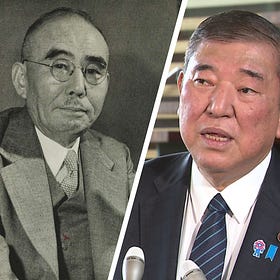Thank you for reading Observing Japan. This post is available to all readers.
If you are looking for timely, forward-looking analysis of the stories in Japan’s politics and policymaking that move markets, I have launched a new service through my business, Japan Foresight LLC. For more information about Japan Foresight’s services or for information on how to sign up for a trial or schedule a briefing, please visit our website or reach out to me.

Prime Minister Ishiba Shigeru will soon be returning to Tokyo after a short visit to Washington, DC to meet with US President Donald Trump, the second visit by a foreign leader to meet with Trump since inauguration day.
In contrast with the first – Trump’s meeting with Israeli Prime Minister Benjamin Netanyahu, when Trump suggested that the US should annex Gaza (and remove its people) – the Ishiba-Trump summit was a conventional, even boring occasion. That should suit Ishiba just fine.
While the Ishiba government was unsure of what to expect – and therefore launched a whole-of-government “Trump strategy council” to help the prime minister prepare for any eventuality – in the end that biggest story coming out of the summit was Trump’s announcement that, while he will not be giving the green light to Nippon Steel’s bid for US Steel, he would welcome Nippon Steel’s investment in the company and would even be willing to mediate a deal. While there was some vague talk of “reciprocal tariffs,” from which Japan would not be excluded, there were few signs of friction between the leaders.

Indeed, to a considerable extent, Ishiba, despite his longstanding rivalry with the late Abe Shinzō (earning him the right wing’s lasting enmity), benefited from enduring goodwill from Abe’s personal relationship with Trump. Trump spoke repeatedly of the late prime minister, said that Abe “thought the world of” Ishiba, and generally spoke in friendly tones about Japan and its friendship with the United States. Ishiba got a personal endorsement from Trump, who referred to him as “very strong” (“I wish he was little weaker,” he said), which will help dispel some of the doubts – many of them voiced by the right wing – that he is not up to managing the US president or the bilateral relationship more broadly.

Ishiba, in fact, used the Abe playbook in important ways. He flattered the president (he described at length how much he liked the photograph of Trump raising his fist after dodging a bullet and how he felt that Trump survived the assassination attempt was a sign of Trump’s divine destiny); he played up Japan’s investments in the United States, stating that Japan would aim for one trillion dollars in foreign direct investment; and he played up Japan’s contributions to the alliance.1
As a result, Ishiba got what he needed from the summit. In their joint press conferences and the joint statement, Trump reaffirmed the US commitment to defend Japan with the full spectrum of US military capabilities, with the Japan-administered Senkaku islands included. Meanwhile, Trump talked about closing the US trade deficit with Japan (which Japanese FDI will make more difficult), but seemed satisfied that Japan will buy more energy and weapons from the United States and did not seem inclined to single out Japan as a particularly urgent problem for his administration.
The summit by no means resolved all the outstanding questions facing the bilateral relationship, most of which have less to do with the bilateral relationship itself than with the second Trump administration’s broader approach to the world. What, for example, will Trump’s desire for negotiations with North Korea mean for Japan? Or, more importantly, what could Trump’s interest in negotiating with Chinese President Xi Jinping mean for Japan? Meanwhile, Constitutional Democratic Party (CDP) leader Noda Yoshihiko and other lawmakers suggested in queries to Ishiba before the summit, there are real concerns in Tokyo about what the Trump administration’s withdrawal from the World Health Organization (WHO), the Paris climate accord, and the provision of foreign aid more broadly mean for the willingness of the US to uphold international order in cooperation with Japan and other allies, questions that will likely be repeated in Diet deliberations next week. Japanese companies, meanwhile, have questions about the future of the trading system, with the still-looming threat of tariffs on Mexico and Canada (where Japanese companies have invested heavily) as well as potentially on Japan and other US trading partners. Ultimately, the broader issue of how Japan and the US can cooperate when they have very different ideas of international order will continue to fuel debate within Japan.
Nevertheless, Ishiba will likely be satisfied with the outcome of his first meeting with Trump. He showed that he can share the stage with the president and even earn his respect; he got the necessary reassurances about the US-Japan security alliance; and he was able to steer bilateral economic discussions towards Japan’s positive contributions (its companies’ investments in the United States) and away from potential sources of friction. All in all, Ishiba got a decent return on a short trip, notwithstanding the big looming questions in the relationship.
Trump, meanwhile, said that the Japanese government’s decision to raise defense spending to two percent of GDP was the result of his discussions with Abe during his first term.




